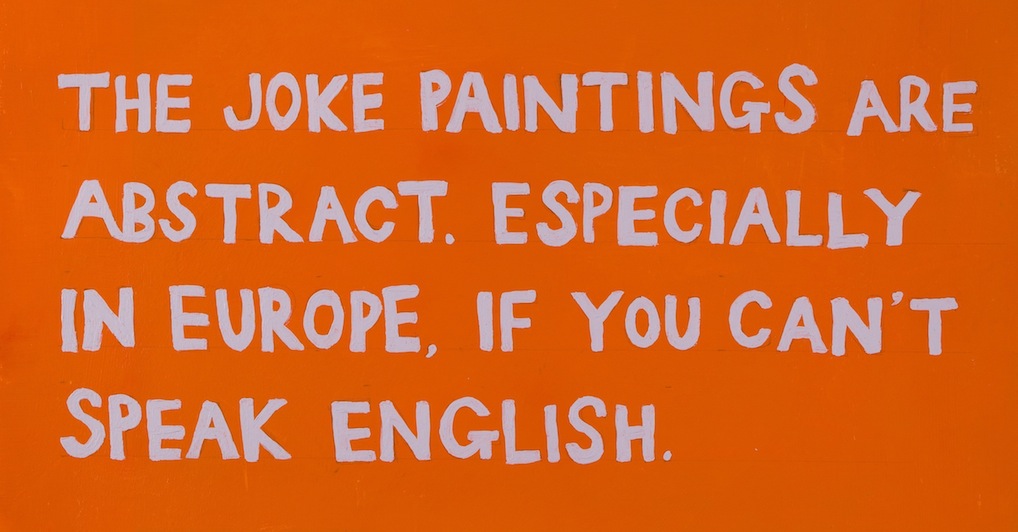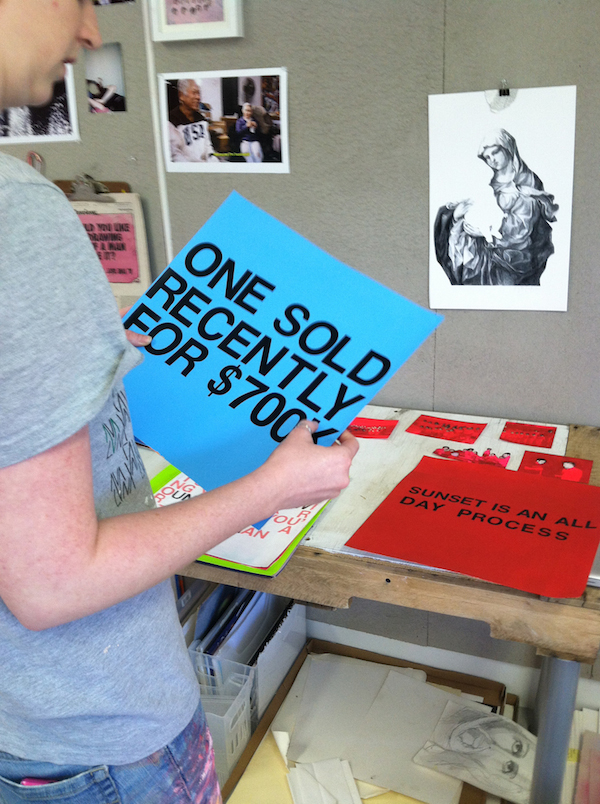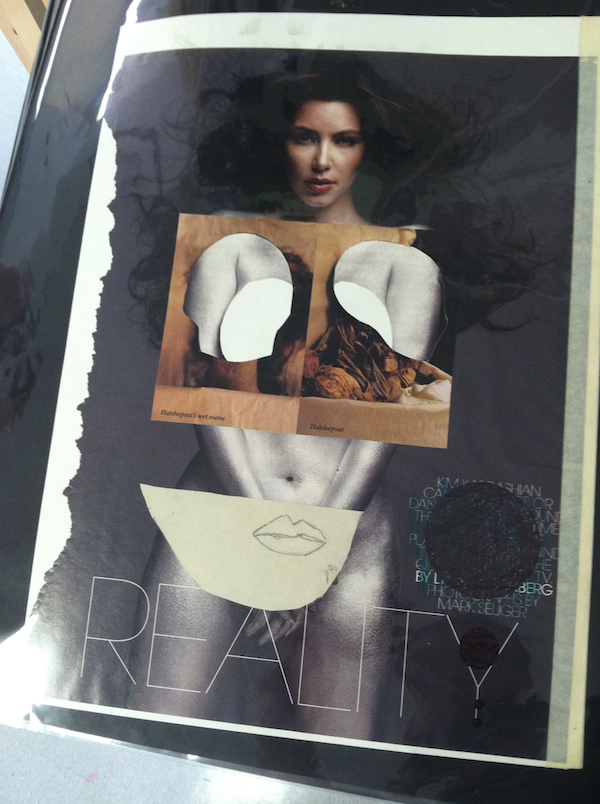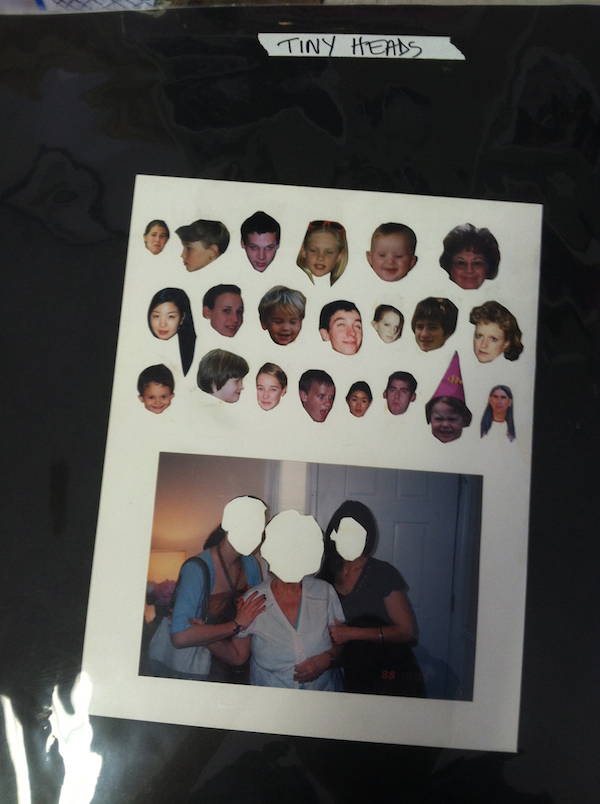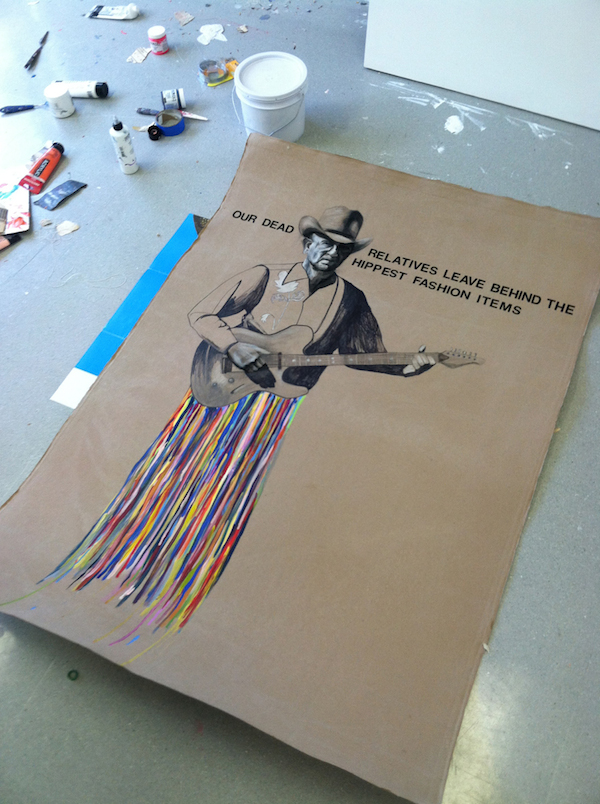An Interview with Amy Hughes Braden by Dwayne Butcher
Amy Hughes Braden is an artist living and working in Arlington, VA. She received her BFA from the Corcoran College of Art and Design in 2011. She is a 2014 recipient of the Ballston BID grant and was awarded “Best in Show” at Strictly Painting 9 in 2013. Her work was recently included in exhibitions at Civilian Art Projects, Delicious Spectacle, Project 4, and EMP Collective. She has work in forthcoming exhibitions at The DC Arts Center, Transformer Gallery, and Crosstown Arts in Memphis, TN.
Dwayne Butcher: Your exhibition, “Are You Gonna Eat That?” just closed at Civilian Art Projects. How did this exhibition come about and what does the title reference?
Amy Hughes Braden: I had connected with Jayme McLellan through the District of Columbia Arts Center facilitated collective, Sparkplug. We did a “blitz crit” that gave us fifteen minutes with six or seven different curators to discuss our work. At the time, Jayme was planning on transforming her gallery into a “spaceless” model for 2014, and after she reviewed my work, we discussed doing a pop-up salon in her home. As we continued to stay in touch, she ended up moving into the space that Annie Gawlak of G Fine Arts had been renovating, which the two galleries now share. So the salon in her house turned into the inaugural show in the new space on 14th Street (which was totally nerve-wracking and a huge honor).

In terms of the work, we used pieces she reviewed at the crit as a jumping off point and then selected the rest of the work through a series of studio visits that was created specifically for the show. I came up with the title after much of the work had been made. I tried to digest all that Jayme and I had been discussing about the work as a (hopefully) comprehensive idea and then distill it all down to one phrase. I really fretted over it. Before I settled on “Are You Gonna Eat That?” I had been mulling over “It’s Hard to Swing Your Dick Around When You’re Married to a Straight Man.” My family was pleased I ended up going a different direction….
DB: How did the use of text evolve in your work?
AHB: When I was in undergrad, I used text as a 1st and 2nd year student, but then purposefully stopped. I thought I was using it as a crutch, and was advised to explore what I could communicate without text. I still don’t know if that was good advice or not, but either way I allowed myself to start using it again fairly recently. I must continue to refine it though– sometimes a piece calls for very crisp lettering and I just don’t have the patience for it, so I use stickers. But that method has it’s own issues. The one approach to text I know I have down though is the “furiously scribbled, oil pastel” method. I’m nothing if not messy.

DB: Your work includes painting, collage, works on paper, video and minimal sculptures. Can you describe your process of how and why you work between so many mediums? Is it a case of the material/method dictates the idea or the other way around?
AHB: I think it’s really natural to move in and out of media. It can feel intimidating at first depending on one’s education or predisposed skill sets. While I have been drawing and painting all my life, I sometimes feel late to the conceptual game. It’s liberating to let the concept dictate the medium, rather than staying within the bounds of the medium I’m most comfortable with. Still, at the end of the day I’m usually making a painting of some sort, whether it looks more like a collage or a sculpture, it’s usually really a painting.
DB: Do you consider yourself a feminist artist? What does this label mean to you?
AHB: No, I consider myself an artist. If in writing about my work, someone wants to say there are feminist ideas, or call me a feminist artist that’s fine. We all have an intrinsic desire to define and categorize what we see. At some point though, it is counterproductive for the marginalized artist, if their minority status is the first or only trait people discuss about them or their work.
DB: You reference and are influenced by the work of artists like Richard Prince, John Baldessari and Jackson Pollock. What is it about their work that inspires you? And what do you mean by the “big swinging dicks” of the art world?
AHB: Well, they are all big swinging dicks, and by that I mean they have an aggressive, macho presence in the art world. They have the stamp of approval from the powerhouse galleries and essentially can do no wrong. These particular three also make grandiose work, which is also a part of it. Also, I should say that I like them all very much and in this order: Baldessari, Pollock, Prince. Or Prince before Pollock– either way Baldessari the most. It’s a little confusing, maybe because everything I just said about them is also part of the attraction.
I like the idea of just sort of stomping around and getting your way. I like the way they seem to work to, at least in the case of Prince, churning out an excessive amount of work and seeing where it falls. There’s this idea mentioned in the press release for the Civilian show, and it’s become very important to how I make work, and this is very generalized, but the idea that male artists executed all of their ideas (not to the fullest extent, but they tried everything). Apparently female artists were much more likely to decide their idea wasn’t good or wouldn’t work before physically trying it out. It seems that much would be lost in the latter method, and I’ve endeavored to not work that way.
That idea makes me think of a video I saw on Facebook, of a college student reading a poem she had written. The part I remember is when she is talking about her parents aging, and how her father grew larger and larger and louder and louder, while her mother shriveled into herself.
It’s not in my nature to behave like the generalizations of women I’ve just mentioned, so my work is naturally larger and bold in color. But with these ideas in mind, I am trying to be more purposeful about how I swing my dick.
DB: How do you feel about appropriating from the appropriators?
AHB: I feel great. I mean, what can Richard Prince ever to do me for directly copying his idea?
DB: So, what is the deal with the tiny heads?
AHB: Oh, the tiny heads really crack me up. I’m always dealing with portraiture in some aspect it seems; combine that with a love of hoarding pieces of paper. Then, I’m sitting at a table with piles of old photos and florescent pink paint making the first tiny head. I find the personal photos an interesting ground for the paintings because it is a finite supply– no longer do I develop a roll of film after a family vacation or whatever. I like the formation of tiny heads floating in the pink air too. It’s very important to me for everything I do to have some aspect of humor. I really crack myself up titling the tiny head pieces. I’m pleased and a little surprised that people seem to like them so much.
DB: What are some other upcoming projects that you are working towards?
AHB: Well as far as my work, I’m excited to cut more paintings off of their frames. Or just stop using stretcher bars at all. I had only one piece like that in my last show, and I want to keep playing with the idea of the wall being the canvas or ground, and collaging these giant shapes of painted canvas onto that ground directly. Essentially, it will be a much larger collage process, using canvas instead of magazines or paper. It’s already clear with the first painting I started after the Civilian show; it needs to be cut into.
Simultaneously, I’m working on new smaller works (including tiny heads!) for a show at Transformer that will open with a gallery talk called “Whine with Amy” on July 16th. I’ll be doing a short residency in the space from the 16th-29th, and I’d love to have visitors. I’ll be making work from 12-6pm each day, and will even have some supplies for visitors to create if the spirit moves. I like to set up situations for myself that force me to make work, so I’m looking forward to this a lot.
I’m really excited to be working with Erick Benetiz and La Bodega Gallery, which is in the Copycat building, on a show that should happen towards the end of the summer/early fall. I’ll be building off of “Are You Gonna Eat That?” and continuing to push the parameters of my media, using lots of color and text as well.
DB: What are some long term and short term goals that you have?
AHB: Short term: stay an artist. Long term: stay an artist.
Here’s a more descriptive response– in the short term I’d like to continue to show in DC, but also expand my reach, and get to know different communities of artists in the country by showing in different cities. In the long term I’m mostly concerned about staying the course. Staying committed to my studio practice and upping my discipline levels. I’d really love to get an MFA, I think it’d be so fun, but I’m not sure that’s a goal.

Author Dwayne Butcher is an artist, curator, writer and chicken wing connoisseur living in Baltimore, MD. To see his work and curatorial projects visit his website, dwaynebutcher.com and follow him on twitter @dwaynebutcher.


